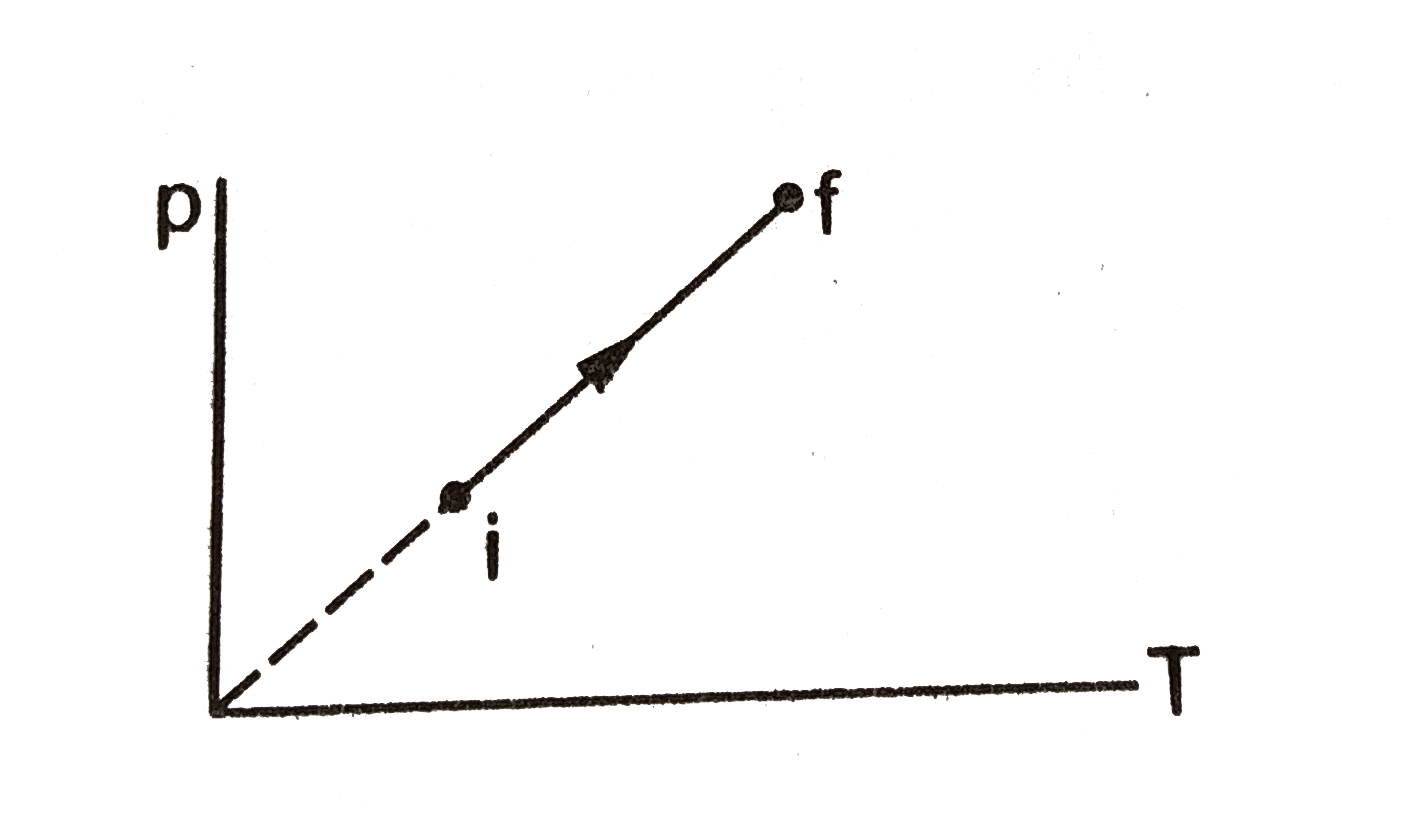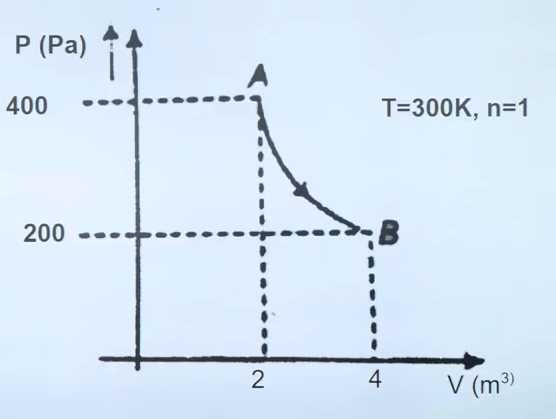When an ideal gas in a cylinder was compreswsed isothermally by a piston, the work done on the gas found to be 1.5×104 Joule. During this process about
3.6×103 cal of heat flowed out from the gas
3.6×103 cal of heat flowed into the gas
1.5×104 cal of heat flowed into the gas
1.5×104 cal of heat flowed out from the gas
To solve the problem, we will use the principles of thermodynamics, particularly focusing on the first law of thermodynamics and the properties of an ideal gas during an isothermal process.
1. Understanding the Process:
- The gas is compressed isothermally, which means the temperature of the gas remains constant throughout the process.
- Given that the work done on the gas is W=1.5×104 Joules.
2. Applying the First Law of Thermodynamics:
- The first law of thermodynamics states:
ΔU=Q−W
- Where:
- ΔU is the change in internal energy,
- Q is the heat added to the system,
- W is the work done by the system.
3. Change in Internal Energy for an Ideal Gas:
- For an ideal gas undergoing an isothermal process, the change in internal energy ΔU is zero:
ΔU=0
- Therefore, substituting this into the first law gives:
0=Q−W
- Rearranging this equation gives:
Q=W
4. Considering the Sign of Work Done:
- Since work is done on the gas, we take W as negative in the context of the first law:
W=−1.5×104 Joules
- Thus, substituting this into the equation for Q:
Q=−1.5×104 Joules
5. Interpreting the Result:
- The negative sign indicates that heat is flowing out of the gas. Therefore, the heat flow Q is:
Q=−1.5×104 Joules
6. Converting Joules to Calories:
- To convert Joules to calories, we use the conversion factor 1 calorie=4.184 Joules:
Q=−1.5×104 Joules4.184 Joules/calorie≈−3580.6 calories
- Rounding this value gives approximately:
Q≈−3.58×103 calories
Final Answer:
The heat flow out from the gas during this process is approximately −3.58×103 calories.
- The gas is compressed isothermally, which means the temperature of the gas remains constant throughout the process.
- Given that the work done on the gas is W=1.5×104 Joules.
- The first law of thermodynamics states:
ΔU=Q−W
- Where:
- ΔU is the change in internal energy,
- Q is the heat added to the system,
- W is the work done by the system.
3. Change in Internal Energy for an Ideal Gas:
- For an ideal gas undergoing an isothermal process, the change in internal energy ΔU is zero:
ΔU=0
- Therefore, substituting this into the first law gives:
0=Q−W
- Rearranging this equation gives:
Q=W
- Since work is done on the gas, we take W as negative in the context of the first law:
W=−1.5×104 Joules
- Thus, substituting this into the equation for Q:
Q=−1.5×104 Joules
- The negative sign indicates that heat is flowing out of the gas. Therefore, the heat flow Q is:
Q=−1.5×104 Joules
- To convert Joules to calories, we use the conversion factor 1 calorie=4.184 Joules:
Q=−1.5×104 Joules4.184 Joules/calorie≈−3580.6 calories
- Rounding this value gives approximately:
Q≈−3.58×103 calories
The heat flow out from the gas during this process is approximately −3.58×103 calories.
Topper's Solved these Questions
Similar Questions
Knowledge Check
An ideal gas system undergoes an isothermal process, then the work done during the process is
AnRTln(V2V1)BnRTln(V1V2)C2nRTln(V2V1)D2nRTln(V1V2)An ideal gas system undergoes an isothermal process, then the work done during the process is
AnRTInV2V1BnRTInV1V2C2nRTInV2V1D2nRTInV1V2An ideal gas receives 10J of heat in a reversible isothermal expansion. Then the work done by the gas:
AWould be more than 10 JB10JCWould be less than 10 JDCannot be determined
An ideal gas goes from the state i to the state ∫ as shown in .the work done by the gas during the process

View SolutionThe work done when an ideal gas is compressed isothermally by 1 litre against a constant atmospheric pressure is
View SolutionWhen an ideal gas is compressed isothermally by 1dm3 against a pressure of 1.013×105N/m2, the work done is
View SolutionOne mole of an ideal gas expands isothermally to double its volume at 27∘C . The work done by the gas is nearly
View SolutionAssertion : For an isothermal process in an ideal gas, the heat obsorbed by the gas is entirely used in the work done by the gas.
Reason : During a process taking place in a system, the temperature remains constant then the process is isothermal.
View Solution


